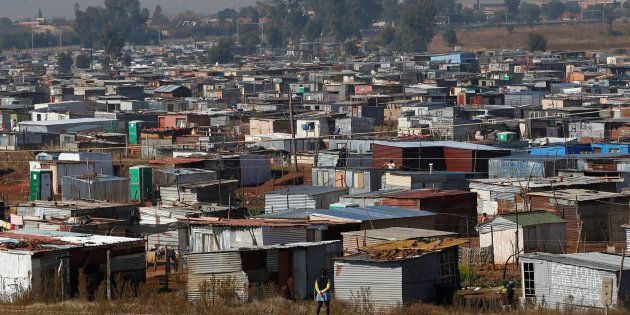
More than five million black South Africans live in informal dwellings across South Africa – that's 385 times the number of white citizens in the same housing bracket.
According to AfricaCheck, which sourced data from Statistics South Africa's 2016 Community Survey, 11.4 percent of South Africa's black population live in informal dwellings.
That's slightly more than 5.1-million people.
The coloured community forms South Africa's second-largest informal dwelling population, with 276,348 people living in informal settlements or in the backyards of other properties. That's 5.7 percent of the coloured population in the country.
Of the 1.3-million Indian citizens in South Africa, 0.9 percent live in informal dwellings.
And of the 4.5-million white South Africans, 13,310 live in the lowest housing bracket. That's 0.3 percent of the white population in the country.
Social media erupted in debate on Thursday when users started questioning why a Google search for "squatter camps in South Africa" revealed images of predominantly white citizens, rather than reflecting the majority of black South Africans who live in informal dwellings.
Tech experts told HuffPost that it boils down to the algorithms commanding Google's search function. Additionally, the South African media uses the phrase "informal settlements" rather than "squatter camps". Given the fact that the majority of the photos of "white squatter camps" originate from foreign media sites, it can be assumed that they are more likely to use the phrase "squatter camps" and it is this that may skew the searches rather than an absence of stories relating to people of colour living in these kinds of conditions.
Searching using the term "informal settlements in South Africa" generates an entirely different set of search results.
AfricaCheck senior researcher Kate Wilkinson said there are two types of informal dwelling, one being on someone else's property and the other in a township or informal settlement.
"The most recent data from Stats SA shows that the majority of those living in informal dwellings are black. Black Africans are shown as the group with the highest share of the total number of people living in informal dwellings," she said.
According to Stats SA's 2016 community survey, there was a gradual increase in the number of households living in formal dwellings over time to 79.2 percent in 2016 from 65.1 percent in 1996. It showed the percentage of households living in traditional dwellings has declined sharply to 7 percent in 2016 from 18.3 percent in 1996, and those living in informal dwellings have decreased slightly to 13 percent in 2016 from 16.2 percent in 1996.
The survey showed that Limpopo has the highest proportion (88.9 percent) of households living in formal dwellings, while the "rural provinces" of the Eastern Cape and KwaZulu-Natal have the highest proportions of households living in traditional dwellings at 26.6 percent and 18.1 percent, respectively. The highest proportion of households living in informal dwellings are in North West (18.4 percent), Gauteng (17.7 percent) and the Western Cape (16.6 percent), according to the report.
Ernst Vorster, the deputy chief executive of communication at Helping Hand, an arm of trade union Solidarity that aids impoverished white South Africans, said the organisation is in the process of conducting a long-term study on informal settlements occupied by white citizens.
"At the moment, we rely mostly on the information we gather from our branches throughout the country. We are aware of approximately 84 'squatter camps' in which Afrikaans people reside, not necessarily so-called only 'white squatter camps'. We are, however, also aware of several informal living arrangements throughout the country in most suburbs, and we are aware of an increasing number of cases where applicants are listing their residence as an informal settlement," he said.
"Sixty-nine percent of applicants also indicated that they live in an informal structure in a residential area. The greatest needs of these applicants are food (33 percent) and clothing (21 percent). 71 percent of the applicants also noted that they do not receive state-funded subsidies. Our research on these individuals indicates that they earn on average an amount of R2,332.57, which is lower than the average for black families, according to the Poverty Trends Report(Stats SA: 2017), and much lower than the R12,000 that the same report indicates as an average income for white families."
